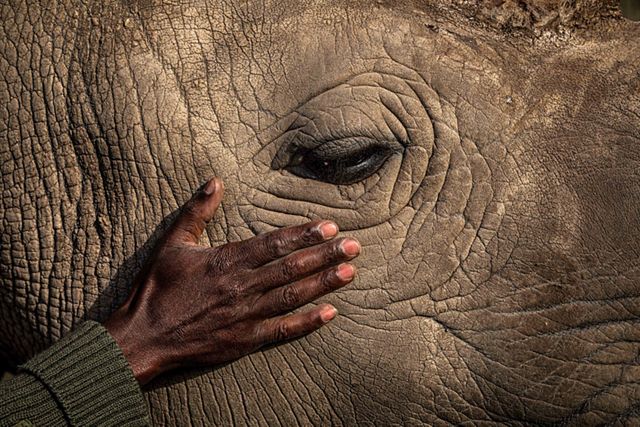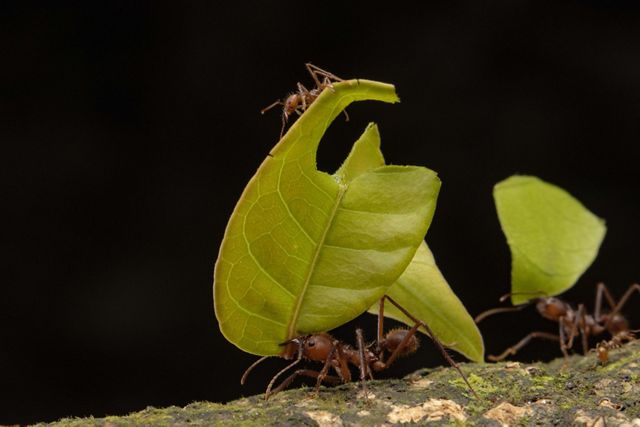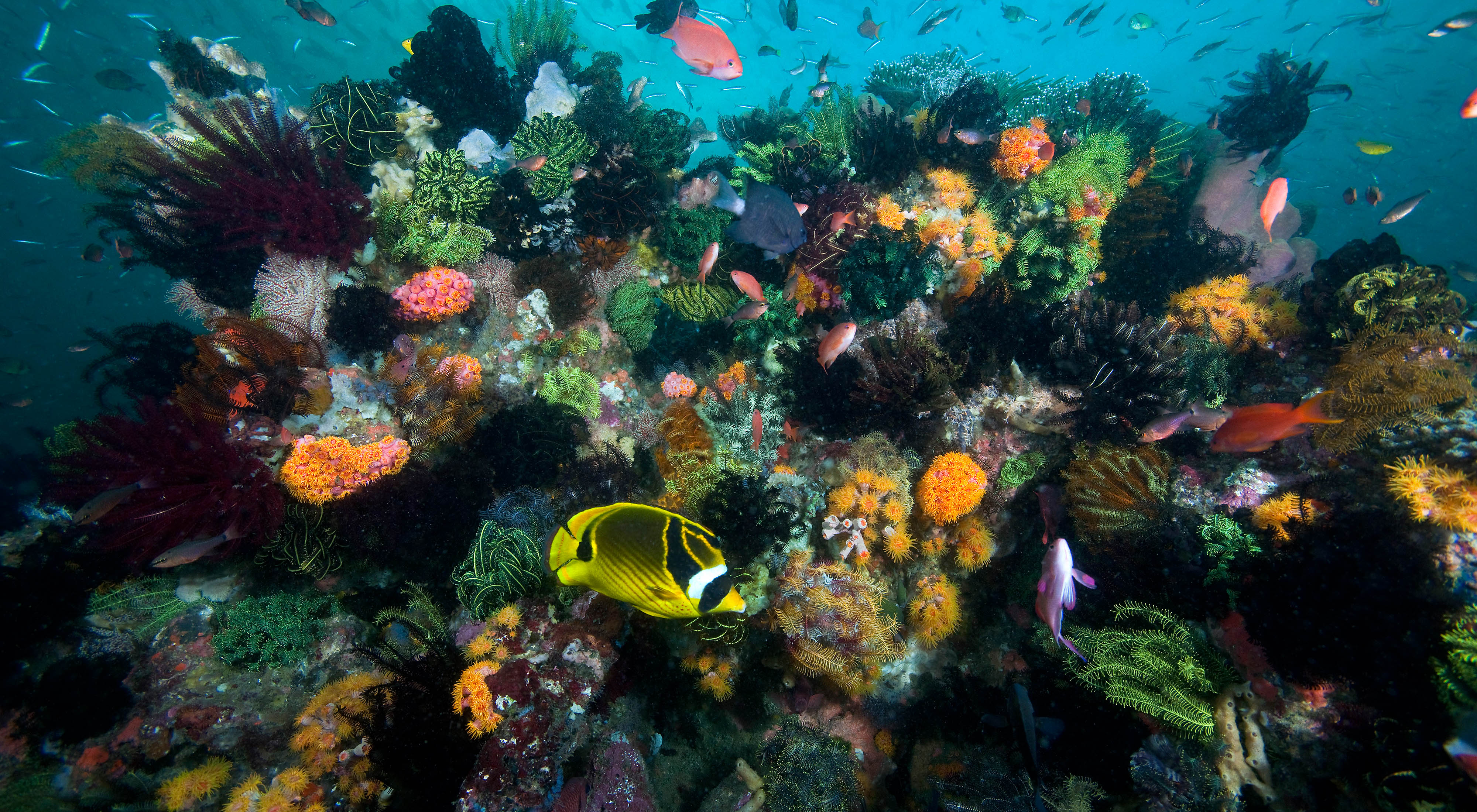COP16: The United Nations Biodiversity Conference
When: October 21 - November 1, 2024
Where: Cali, Valle del Cauca, Colombia
Participants: Convention on Biological Diversity member countries
The race to protect the planet's biodiversity will be front and center this October when representatives from countries around the world gather in Cali, Colombia, for the United Nation's Biodiversity Conference, referred to as COP16.
For COP 16, the three main areas of focus will be on:
- Implementing the Kunming-Montreal Global Biodiversity Framework (the Biodiversity Plan) into national action;
- Investing and collaborating for nature to bolster resource mobilization and technical cooperation; and
- Accelerating progress on access and benefit-sharing.
Here's a little background on the biodiversity conference and what's at stake for you and the planet.
CBD-COP15 Scores Historic Goal for Nature
Long-awaited Global Biodiversity Framework finally makes it across the line.
Read TNC's Media Statement1. What is COP16?
COP16 stands for the 16th meeting of the Conference of the Parties for biodiversity. It runs October 21 through November 1 in Cali, Colombia. COP15—along with previous meetings—was centered around the Convention on Biological Diversity, a 1992 international agreement on how nations should use and protect the world's natural resources. The agreement has been ratified or accepted by 196 countries. The United States is not part of that list, though US government representatives did participate in Montreal.
The U.S. on Convention on Biological Diversity
While nearly all of the world's nations have ratified the Convention on Biological Diversity, the United States has failed to do so for three decades. That stance hamstrings the U.S. ability to influence the treaty and play a decisive role in addressing the global crisis of biodiversity loss.
Read Scientific American's perspective on the U.S. position.
2. Why is COP16 important?
Since 2015, governments have had the legally binding Paris Agreement—like a collective guiding star on climate—but now is the time to update decadal globally agreed targets for nature. So the focus is implementing a new, 10-year Global Biodiversity Framework: humanity’s roadmap towards a more nature-positive future.
The race to save the planet’s biodiversity is every bit as urgent as the climate crisis. One quarter of plant and animal species are threatened with extinction and over half of global GDP is dependent on nature.
The science is clear: As global biodiversity continues to decline at an alarming rate, we must protect 30% of terrestrial, inland water and marine areas by 2030. To ensure long-lasting protection, these conserved areas must be effectively managed and inclusively governed.

3. What were the topics at the last biodiversity conference?
Stakes are huge, time is short, and negotiations were tricky. Among the many issues negotiated at COP15 were proposals that address infrastructure, agriculture, invasive species, pesticides, the role of business and government subsidies that harm the environment.
Negotiators ultimately reached agreements on financing biodiversity (including how the costs are shared among wealthy and developing countries), honoring Indigenous leadership, and valuing nature's contribution to humanity.
Looming behind the proposals at COP15 were the connection between protecting biodiversity and tackling climate change. Forests, mangroves, coral reefs, peatlands and other ecosystems that harbor a wealth of life also store vast amounts of carbon, so protecting and restoring these ecosystems is essential for tempering the planet’s climate.
4. Why will TNC be at COP16?
As leaders of governments worldwide set new global targets for protecting biodiversity, TNC stands ready to help nations realize their bold ambitions. This is core to our mission and our priorities. We must safeguard nature not only for its own sake, but also to temper climate change and protect communities around the world.
Here are some key principles that TNC encourages:
More—and more diverse—protection is necessary. We're heartened by the Campaign for Nature’s and the High Ambition Coalition’s effort to raise ambitions, proposing that 30% of critical habitats be protected by 2030. We must also remember that protection can take many forms—from China’s new national parks system to Canadian efforts to return lands and waters to their rightful Indigenous owners for traditional forms of resource management and protection.
Inclusive conservation and respect for Indigenous Peoples and local communities is critical. Indigenous groups have managed their lands in harmony with nature for thousands of years. Recent science is now acknowledging this. The most effective protection efforts work with communities to ensure that their voices are heard and their needs and traditions respected as protection conservation efforts are cocreated.
Water matters: Protecting 30% must represent the full diversity of life on Earth across terrestrial, marine and freshwater biomes and the ecosystems within them. While terrestrial protection is critical for meeting the dual global crises of climate change and biodiversity loss, land alone cannot solve the world’s problems. Freshwater, coastal and high seas environments must also be priorities.
Conservation must be durable. We need to make sure conservation actions are built and financed to last. Practices must provide long-term sustainable financing to fill the nature gap and meet ongoing management needs. They should include the right policies, legal structures and community support to ensure that a conservation area system can withstand economic downturns, political tumult or even the next pandemic.

5. What can I do to help address the loss of biodiversity?
Here's a few things you can do
-
Share this page on your social channels so others know what they can do, too. Here are hashtags to join the conversation: #COP16 #NatureNow
-
Speak Out for Action on Species Loss. Sign the pledge to defend species and our planet. Sign this petition and call on world leaders to put strong policies in place to halt and reverse biodiversity loss now.
-
Get our timely takes on some of the biggest challenges facing people and the planet. Sign up now.
-
Educate yourself and share the knowledge. If you feel ready to take a deep dive, scroll down to the next section for some resources we've put together on key topics that will be discussed at COP16.
Our global insights, right to your inbox
Real-world solutions to the most complex challenges facing people and nature today.
Get our newsletter6. Dive deeper on biodiversity issues
For leaders working on biodiversity issues, we’ve developed resources on finance, infrastructure, local leadership, and more.
-

Implement Commitments: The Biodiversity Action Guide
There’s no shortage of strategies available to create a nature-positive planet now—our downloadable guide shows how nations are leading to translate ambition into action. See the Biodiversity Action Guide.
-

Close the Nature Funding Gap: A Finance Plan for the Planet
We need $700 billion to reverse the global biodiversity crisis. Here’s how we get it.
-

Build Better: Biodiversity Compensation
Protecting nature is also vital for the health and well-being of people-and the loss of nature is not an inevitable result of human development. See how we can build better for biodiversity.
-

Recognize Local Leaders: Nine Places Where People Are a Force for Nature
Local heroes across the globe remind us nature is personal, and show what leadership looks like in a world of change. See these inspiring places.
-
Protect Nature Through Authentic Partnerships
Conservation for the coming decades must be based in authentic partnerships with Indigenous Peoples and local communities. Read the blog.




